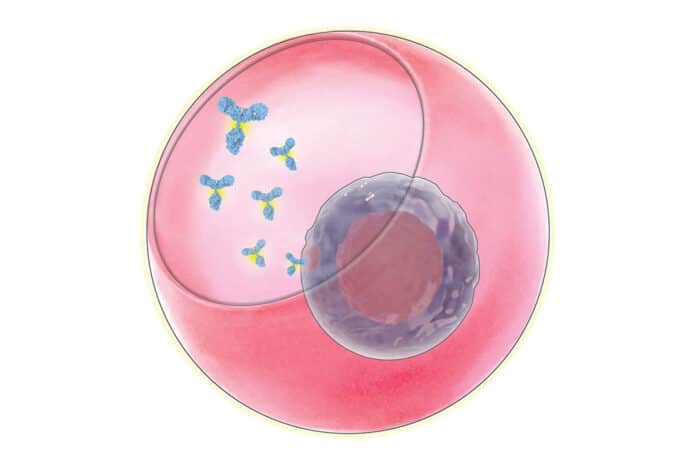Immunoglobulin G (IgG) is the most common type of antibody in the human body. It stores memories of past infections and tags dangerous microbes to be eliminated by immune cells.
It’s been known that a population of white blood cells, called plasma B cells, make IgG. However, the molecular mechanisms enabling plasma cells to secrete antibodies into the bloodstream remains poorly understood.
A new study by the collaboration led by UCLA and the Seattle Children’s Research Institute revealed new knowledge about the genes responsible for the production and release of IgG. According to scientists, this discovery could lead to new antibody-based treatments and improvements in the effectiveness of cell therapies.
Numerous single plasma B cells were isolated, together with each of their distinct secretions. They then connected the number of proteins released by each cell and an atlas depicting hundreds of genes that the cell expressed. The scientists employed tiny hydrogel bowl-shaped nanovials to collect the cells and their secretions.
Through this approach, scientists discovered that the genes responsible for generating energy and getting rid of unwanted proteins were even more crucial for high IgG secretion than those responsible for providing instructions for creating the antibody. Additionally, they found that CD59, a gene that had not previously been connected to IgG secretion, is a stronger predictor of high-producing plasma cells compared to other genetic markers already linked to this cell type.
Dino Di Carlo, the Armond and Elena Hairapetian Professor of Engineering and Medicine at the UCLA Samueli School of Engineering, said, “These processes in cells are like an assembly line for making proteins, and there are lots of places where you could see bottlenecks. Things have to be moving smoothly in sync across the cell. If a cell is making a lot of proteins, it’s using a lot of energy and needs a way to correct the proteins that get messed up.”
The study’s novel usage of nanovials in a conventional laboratory setting also creates new avenues for studying how DNA instructions are transformed into cellular actions.
Each nano vial has molecules specifically designed to bind with proteins on the surface of the cells the researchers are studying, allowing the nano vial to catch one cell at a time. Following that cell’s immobilization and protection inside the nanovial “bowl,” its secretions likewise gather and are bound to particular antibodies made to catch them.
In the study, scientists used nanovials with a diameter roughly equivalent to one-third the thickness of a sheet of paper to catch tens of thousands of plasma cells together with the IgG they emitted. After that, a device was used to examine each cell’s messenger RNA, or mRNA, in the nanovials.
Every cell in a person’s body contains an identical DNA blueprint. Thus, scientists can determine which genes are active by examining the mRNA, which translates these instructions so that each cell may make proteins particular to its functions.
Di Carlo said, “There are multiple layers of information in each cell. We can link the final layer — the amount of proteins secreted that have a clear function throughout the body — back to the more fundamental layer of genetic code. There’s currently no other technique that is available to do that. Now that we have this approach, the most interesting thing, to me, is which question to ask next.”
Scientists look forward to identifying all of the genes that affect plasma cells’ production and secretion of IgG.
Journal Reference:
- Cheng, R.YH., de Rutte, J., Ito, C.E.K. et al. SEC-seq: association of molecular signatures with antibody secretion in thousands of single human plasma cells. Nat Commun 14, 3567 (2023). DOI: 10.1038/s41467-023-39367
